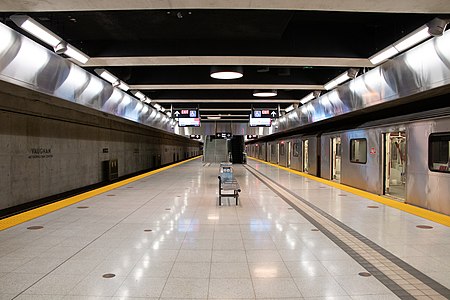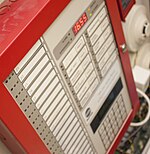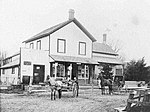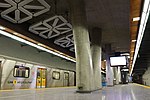Vaughan Metropolitan Centre station

Vaughan Metropolitan Centre (also known as Vaughan, Vaughan Metro Centre or VMC) is a rapid transit station in Vaughan, Ontario, Canada. Opened on December 17, 2017, it is the north terminus of the western section of the Toronto subway's Line 1 Yonge–University. It is operated by the Toronto Transit Commission (TTC) and is one of two subway stations in the system outside of Toronto's city limits. It provides connections to a York Region Transit (YRT) Viva bus rapid transit route along the Highway 7 Rapidway, which is also used by a Brampton Transit Züm route, as well as several local YRT bus routes. Located in Vaughan Metropolitan Centre, the suburban city's planned downtown, the station is designated by Metrolinx as a mobility hub, one of several multimodal transit terminals in the Greater Toronto and Hamilton Area. The station has a 900-space park-and-ride lot, which is privately owned and operated by SmartCentres, unlike other TTC rapid transit station parking lots which are owned and operated by the TTC itself.
Excerpt from the Wikipedia article Vaughan Metropolitan Centre station (License: CC BY-SA 3.0, Authors, Images).Vaughan Metropolitan Centre station
Highway 7, Vaughan
Geographical coordinates (GPS) Address Website External links Nearby Places Show on map
Geographical coordinates (GPS)
| Latitude | Longitude |
|---|---|
| N 43.794166666667 ° | E -79.5275 ° |
Address
Vaughan Metropolitan Centre
Highway 7 3150
L4K 5Z7 Vaughan
Ontario, Canada
Open on Google Maps







